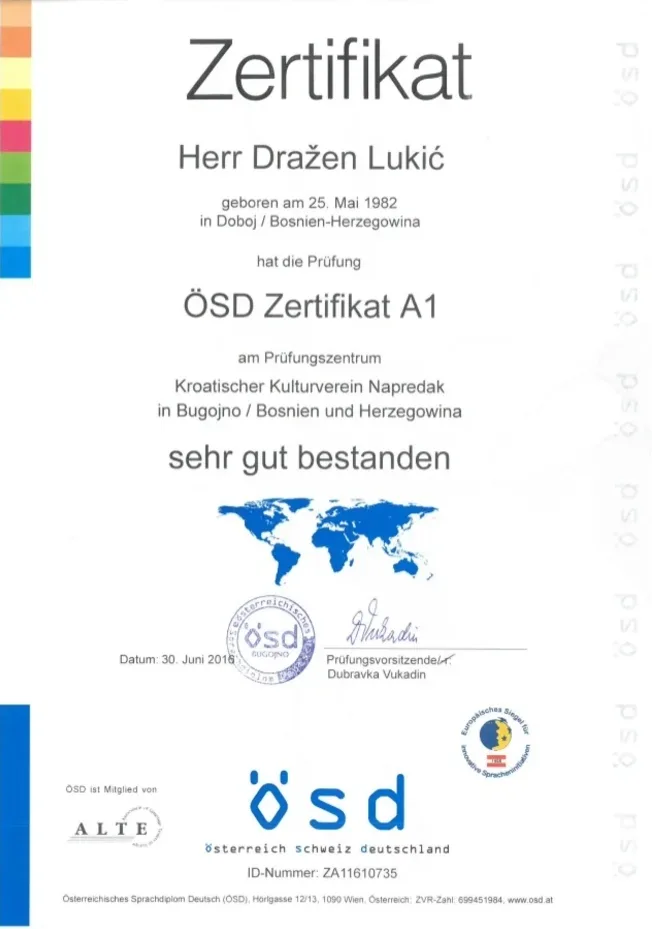How To Choose The Right Ösd Exam Online

Understanding the ÖSD Exam: A Gateway to Proficiency in German
The ÖSD (Österreichisches Sprachdiplom Deutsch) exam is a standardized language efficiency test developed to evaluate and license German language abilities. Recognized worldwide, the ÖSD exam accommodates different learners, ranging from beginners to innovative speakers. This post aims to supply a useful introduction of the ÖSD exam, detailing its structure, levels, preparation techniques, and frequently asked concerns.
The Importance of the ÖSD Exam
In a globalized world where efficiency in multiple languages is extremely valued, the ÖSD exam serves a number of vital purposes:
Certification of Language Proficiency: The ÖSD exam uses certificates that are recognized in Austria and other German-speaking nations, helping with employment opportunities and university admissions.
Standardized Assessment: The exam supplies a standardized assessment of language skills, which can be beneficial for scholastic and expert functions.
Structured Learning Path: The ÖSD provides a clear structure for language learners, guiding them toward attaining specific language objectives through a structured curriculum.
Structure of the ÖSD Exam
The ÖSD exam is divided into numerous levels lined up with the Common European Framework of Reference for Languages (CEFR). Each level tests 4 key language skills: listening, reading, composing, and speaking.
Levels of the ÖSD Exam
The ÖSD provides evaluations at 6 levels, representing the CEFR structure:
A1: Beginner
A2: Elementary
B1: Intermediate
B2: Upper Intermediate
C1: Advanced
C2: Proficiency
Each level has particular requirements and expectations, enabling prospects to focus on ideal materials and practices based upon their efficiency.
Exam Components
The ÖSD exam is divided into four distinct elements:
Listening Comprehension: Candidates listen to different audio materials (discussions, interviews, and discussions) and respond to comprehension questions.
Reading Comprehension: This section includes texts of varying lengths and complexities, accompanied by questions that assess understanding and analysis.
Composing: Candidates are needed to produce written texts (letters, essays, or reports) depending on the level, showing their ability to convey information and arguments successfully.
Speaking: The speaking component normally involves a conversation with an examiner, needing candidates to show fluency, pronunciation, and grammatical accuracy.
Preparation for the ÖSD Exam
Getting ready for the ÖSD exam needs a strategic technique, integrating numerous study approaches and resources. Here are some effective strategies:
Research study Methods
Register in a Language Course: Structured courses can provide assistance and a systematic approach to language knowing.
Practice with Sample Tests: Using official ÖSD sample materials can acquaint prospects with the exam format and question types.
Sign Up With a Study Group: Collaborating with peers can improve finding out through shared understanding and responsibility.
Usage Language Learning Apps: Mobile applications can support language acquisition, offering vocabulary practice and interactive exercises.
Resources
Textbooks and Workbooks: Choose materials that line up with the target level of the ÖSD exam.
Online Platforms: Websites committed to language learning often supply free resources, consisting of grammar exercises and vocabulary lists.
Tutoring: Personal direction from skilled instructors can offer customized feedback and targeted practice.
Tips for Success
Set Realistic Goals: Break down the preparation procedure into manageable milestones.
Engage with Native Speakers: Regular interaction with native German speakers can improve conversational abilities and cultural understanding.

Immerse Yourself in the Language: Consume German-language media-- such as movies, podcasts, and books-- to improve listening and reading abilities.
Practice Regularly: Consistency is type in language learning; allocate time every day for practice throughout all 4 skills.
Often Asked Questions (FAQs).
1. What are the main differences in between the ÖSD exam and other German language exams?
The ÖSD exam particularly focuses on modern German usage and culture, using a special point of view compared to other exams, such as the TestDaF or the Goethe-Zertifikat. Each evaluation has various structures, levels, and emphasis on various skills, accommodating particular needs and target audiences.
2. For how long does it take to prepare for the ÖSD exam?
Preparation time differs significantly based upon the candidate's existing language skills. Usually, it can take anywhere from a few months to over a year of dedicated research study to prepare for each level.
3. Is there an age limit to take the ÖSD exam?
No, there is no age limitation for candidates wishing to take the ÖSD exam. People of any ages, from kids to adults, are motivated to get involved based on their language proficiency and goals.
4. Where can I take the ÖSD exam?
ÖSD exams are administered at various licensed examination centers worldwide. Candidates can go to the official ÖSD website to find a center near them and to check readily available dates.
5. How are ÖSD exam results scored?
Prospects get a rating for each part of the exam, which is then integrated to give a general proficiency level. Results are generally offered a couple of weeks post-examination.
Conclusion.
The ÖSD exam is a respected language proficiency test that works as an important tool for individuals seeking to demonstrate and certify their German language skills. Through ösd a1 , structured knowing, and access to the ideal resources, candidates can achieve their wanted proficiency level, boosting their chances in both academic and professional domains.
